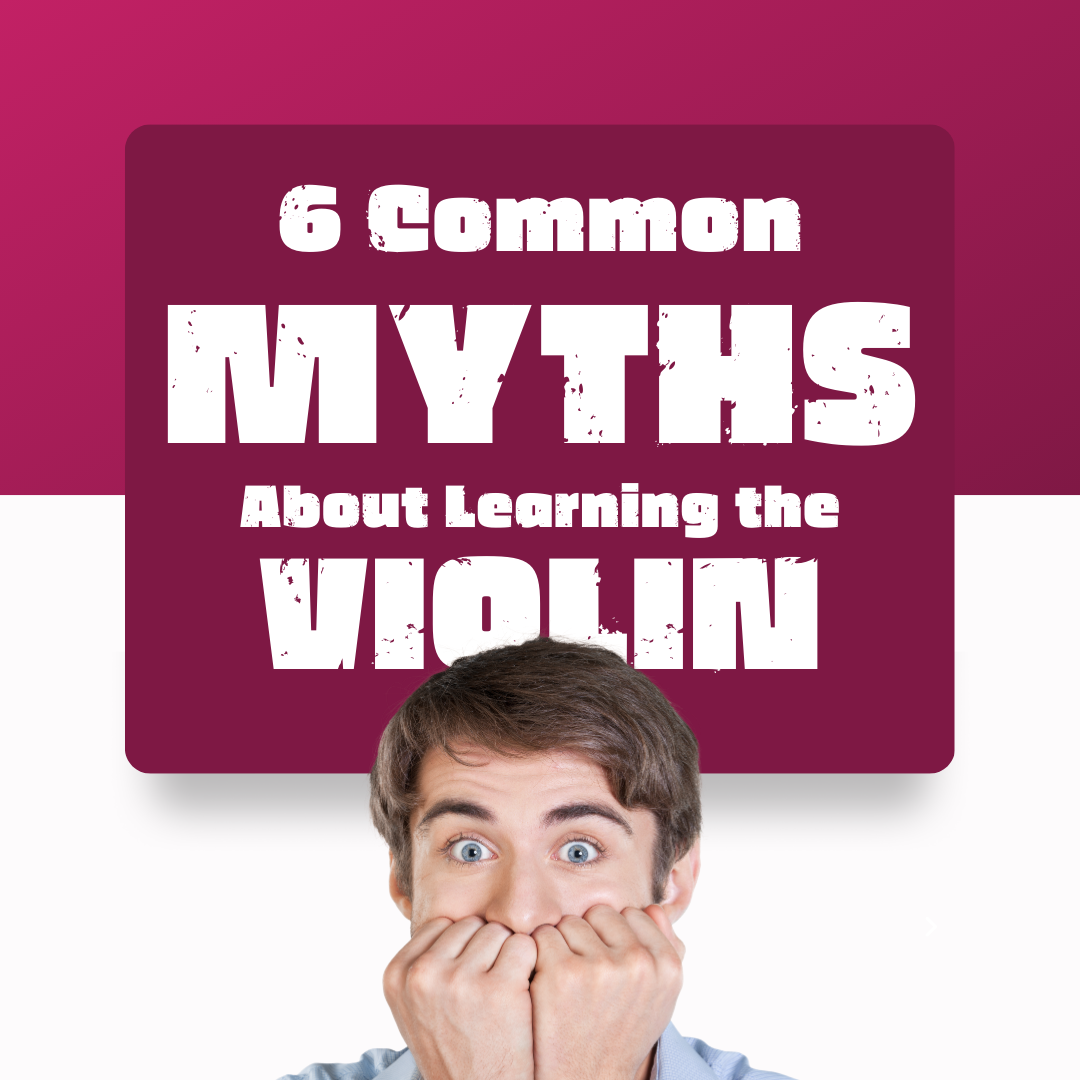6 Common Myths About Learning the Violin
Professional violinists and teachers mostly encountered numerous misconceptions about learning the violin. These myths can discourage aspiring musicians or mislead parents into considering lessons for their children. Let's debunk some of the most common myths and clarify what learning the violin truly entails.
Myth #1: The Violin is a Difficult Instrument
False. The perception that the violin is inherently difficult often stems from observing poorly instructed players. In reality, the violin can be mastered with ease when taught and learned correctly. A well-trained violinist exhibits smooth, effortless movements, while a student lacking proper guidance might struggle with clumsy techniques and unnecessary tension.
The key to overcoming this myth is finding a skilled violin teacher who can provide the right foundation and instruction, making the learning process enjoyable and accessible.
Myth #2: The Violin is Best Learned at a Very Young Age
Mostly False. While starting young can be advantageous, it's not the only path to learning the violin. It's a common belief that children should begin lessons as early as possible, sometimes as young as 3 or 4 years old. However, such early starts are rare exceptions. The violin requires a certain level of focus and physical stamina, making it more appropriate for children aged 5 and up.
What's most important is the quality of instruction and the support system at home. Children, especially those under 11, benefit greatly from practicing with a parent's guidance rather than independently, so family involvement is crucial.
Myth #3: Buying a Violin is Expensive
False. A quality student violin can be quite affordable, typically ranging from $400-500. However, to the untrained eye, all violins may appear similar, leading to potential pitfalls in purchasing. It's essential to consult with a knowledgeable teacher or visit a reputable violin shop to ensure you're investing in a well-crafted instrument.
Avoiding cheaper, poorly made violins is crucial, as they can hinder a student's progress and enjoyment. A good-quality instrument is a worthwhile investment that can significantly enhance the learning experience.
Myth #4: My Child Can Use Grandpa’s Old Violin
Maybe, but with caution. While using a family heirloom can be sentimental and cost-effective, it's not always practical. Violins need to be properly sized for the player, and even if the instrument itself is in good condition, it may require adjustments or repairs to be playable.
Accessories like the chin rest and shoulder rest may also need to be fitted specifically for the player. It's advisable to have the instrument evaluated and possibly serviced by a professional luthier to ensure it meets the needs of the student.
Myth #5: We Can “Try It for a Month” to See If My Child Likes It
False. Learning the violin is a long-term commitment that requires time and patience. Expecting a child to decide if they like the instrument after just a few lessons is unrealistic. The initial stages of learning involve fundamental skills that may not seem immediately rewarding. Similar to starting school, progress with the violin unfolds gradually.
Parents play a crucial role in fostering a positive attitude and setting realistic expectations. It's important to view violin lessons as an ongoing journey rather than a short-term trial.
Myth #6: I Don’t Really Need Lessons; I Just Want to Learn a Few Songs or “Fiddle”
False. The violin is an instrument that requires proper technique from the very beginning. Attempting to learn without professional instruction can lead to bad habits, poor sound quality, and potential physical discomfort. A qualified teacher can provide essential guidance on holding the instrument, bowing techniques, and producing a good tone.
While online resources can be helpful, they cannot replace the personalized feedback and structured learning that come with one-on-one lessons. Even for those interested in fiddling or casual playing, foundational skills are necessary for an enjoyable and successful experience.
Conclusion
Learning the violin is a rewarding journey requiring commitment and proper guidance, like any skill. Whether you're a parent looking to introduce your child to music or an adult considering taking up the violin, it's important to approach the process with realistic expectations and the right support. Dispelling these myths can help you start on the right foot and enjoy the many benefits of playing this beautiful instrument.
With dedication and the right instruction, anyone can learn to play the violin and find joy in the music they create. NUVO Music School is now open for the fall semester, if you are interested contact us now!

